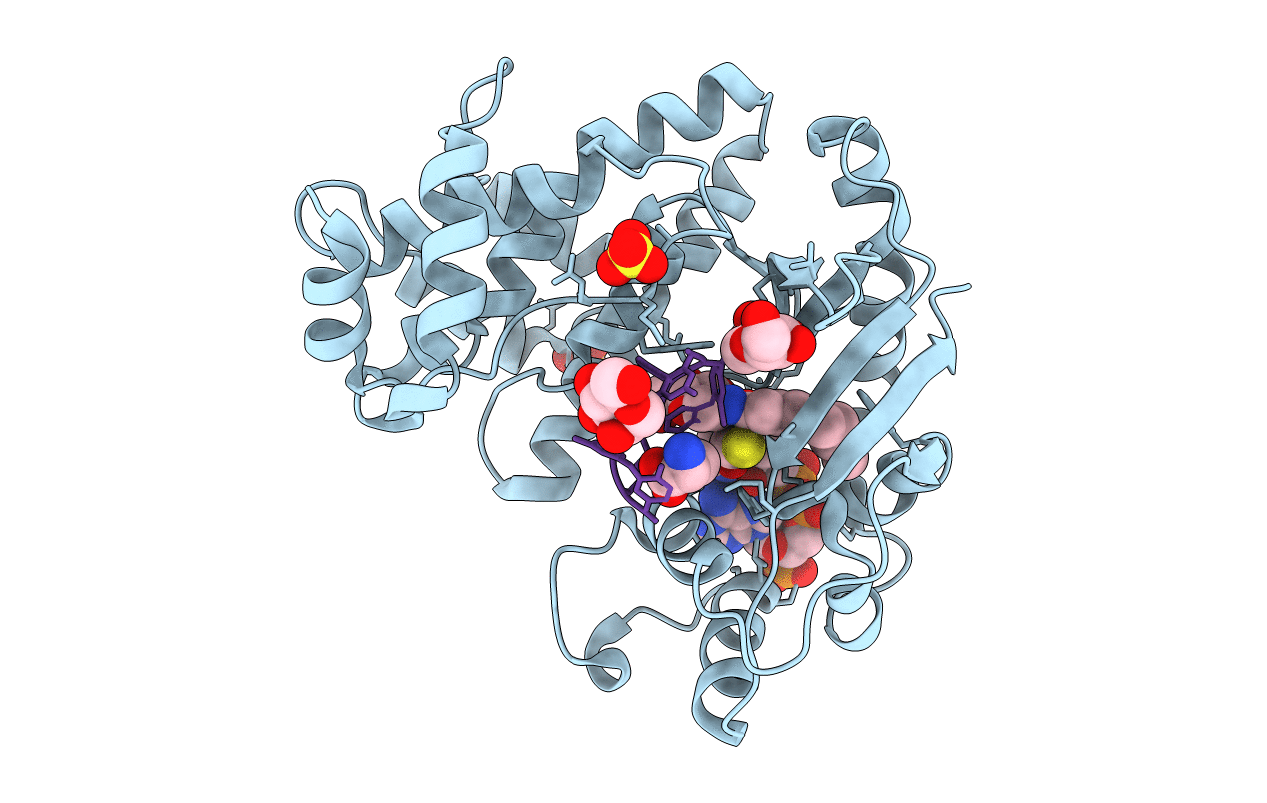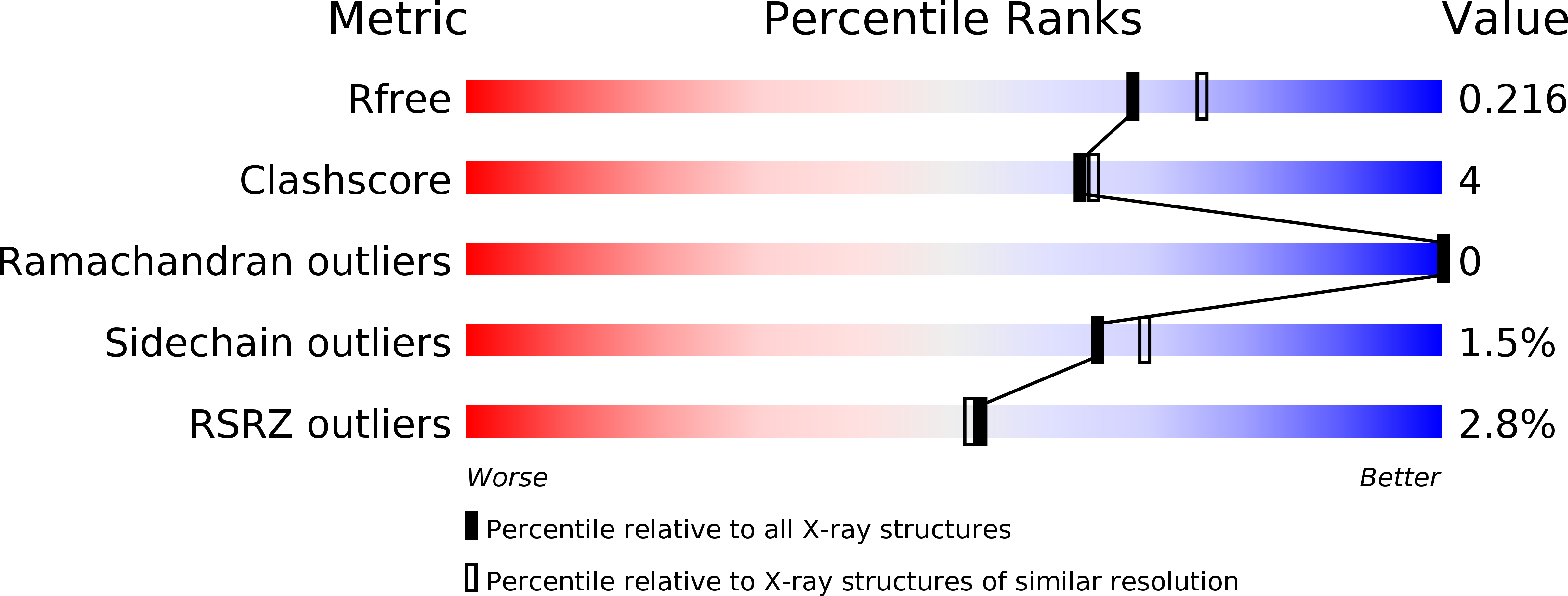
Deposition Date
2013-08-28
Release Date
2014-09-03
Last Version Date
2023-12-06
Entry Detail
PDB ID:
4MFQ
Keywords:
Title:
The crystal structure of acyltransferase in complex with CoA and 10C-Teicoplanin
Biological Source:
Source Organism:
Actinoplanes teichomyceticus (Taxon ID: 1867)
Host Organism:
Method Details:
Experimental Method:
Resolution:
2.00 Å
R-Value Free:
0.21
R-Value Work:
0.17
R-Value Observed:
0.17
Space Group:
P 65


